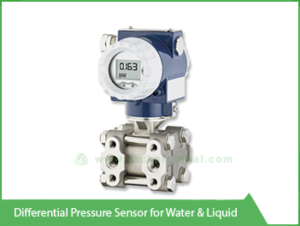One of the most exquisite applications of differential pressure sensors for water & liquid is measuring the pressure in the sealed tanks. The theory behind the application is pretty gaudy, Differential pressure sensors for water & liquid can be a saviour. Do you know that a sealed tank contains an invisible layer of  atmospheric gas over the liquid contained in the tank? Well, this layer of gas has a pressure which has been termed as vapour pressure. There is this hydrostatic pressure in the bottom of the tank which is due to the effect of standing water. When combined, these two creates problems for pressure measuring gauges. The resultant of hydrostatic & vapour pressure fluctuate the measuring needles, which in turn results in not so accurate differential pressure readings. This menace has failed pressure gauges to a great extent. Well, with the advancement of technology, differential pressure sensors for water & liquid can be your best pick for measuring the pressure of sealed tanks. The correct pressure of the tanks can be obtained by the same. Another vital application can be using a pressure sensor with injection wells. This is done to calculate the difference in the pressure values of reservoir & foot holes. Measure the pressure of injection pressure and that of reservoir pressure with added ease through the aid of differential pressure sensors for water & liquid. Do you know when it comes to calculating the liquid’s flow in a pipe, the diameter of the pipe might cause a bit problem. To overcome this, an orifice plate is used from the inside, this reduces the path of the liquid stream. Differential pressure sensors for water & liquid measure the liquid’s pressure at the orifice plate’s left slant as well as right slant and then calculates the differential pressure of the stream. There are mainly three designs for pressure sensors for liquids out there in the market. For the best measurement and computation of the water stream’s pressure, you can make use of a piston-style pressure sensor. The same can be your best pick for measuring the differential pressure if the water is clean. Piston type pressure sensors can measure the pressure in liquids with low differential pressure. Another type of pressure sensor for liquid and water is a welded sensor, this type of sensor is a packed one. Best suited for higher temperatures, volatile environment involving a lot of pulsation, you can leverage the capabilities of an all-welded pressure sensor. The third one in the array of differential pressure for water & liquid is the double-style diaphragm sensor. When it comes to measuring the differential pressure of high-pressure environment locked with low-differential pressure, then double-diaphragm sensors with a pressure accommodation range of over 3600 psi can be your out of the box pick.
atmospheric gas over the liquid contained in the tank? Well, this layer of gas has a pressure which has been termed as vapour pressure. There is this hydrostatic pressure in the bottom of the tank which is due to the effect of standing water. When combined, these two creates problems for pressure measuring gauges. The resultant of hydrostatic & vapour pressure fluctuate the measuring needles, which in turn results in not so accurate differential pressure readings. This menace has failed pressure gauges to a great extent. Well, with the advancement of technology, differential pressure sensors for water & liquid can be your best pick for measuring the pressure of sealed tanks. The correct pressure of the tanks can be obtained by the same. Another vital application can be using a pressure sensor with injection wells. This is done to calculate the difference in the pressure values of reservoir & foot holes. Measure the pressure of injection pressure and that of reservoir pressure with added ease through the aid of differential pressure sensors for water & liquid. Do you know when it comes to calculating the liquid’s flow in a pipe, the diameter of the pipe might cause a bit problem. To overcome this, an orifice plate is used from the inside, this reduces the path of the liquid stream. Differential pressure sensors for water & liquid measure the liquid’s pressure at the orifice plate’s left slant as well as right slant and then calculates the differential pressure of the stream. There are mainly three designs for pressure sensors for liquids out there in the market. For the best measurement and computation of the water stream’s pressure, you can make use of a piston-style pressure sensor. The same can be your best pick for measuring the differential pressure if the water is clean. Piston type pressure sensors can measure the pressure in liquids with low differential pressure. Another type of pressure sensor for liquid and water is a welded sensor, this type of sensor is a packed one. Best suited for higher temperatures, volatile environment involving a lot of pulsation, you can leverage the capabilities of an all-welded pressure sensor. The third one in the array of differential pressure for water & liquid is the double-style diaphragm sensor. When it comes to measuring the differential pressure of high-pressure environment locked with low-differential pressure, then double-diaphragm sensors with a pressure accommodation range of over 3600 psi can be your out of the box pick.
